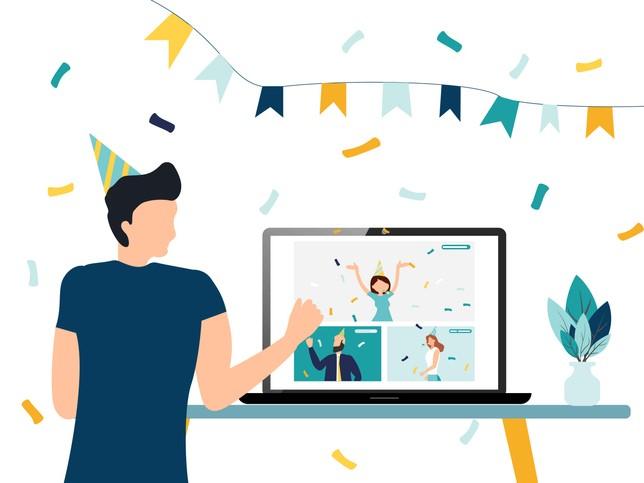
Using the right technology at the right time in the flipped classroom
Course design that matches tech with learning outcomes can allow students to learn from their mistakes and develop resilience

The foundations of good teaching environments remain consistent whether in web-based or face-to-face instruction. Given that online formats are here to stay, through new waves of Covid and beyond, let’s make them the best they can be for our students. The flipped classroom – when based on and gradual release principles – allows for teaching higher-level outcomes where content is provided asynchronously and scaffolding and active learning become the focus.
<������Ƶ>What is a flipped classroom?A flipped classroom is one where the lesson is provided to the students at home, and then the homework is the focus of the interactions in the classroom (a reversal of the usual lesson-then-homework model). A key advantage of this structure is that learners are supported when they run into trouble understanding or thinking critically in relation to the course materials.
So, let’s tie the idea of the flipped classroom into two foundational and well-respected theories about learning – and the principles of – to see if they hold up.
Bloom’s taxonomy in context
Benjamin Bloom’s taxonomy proposes six steps ranked from lowest to highest cognitive load:
- Knowledge: recite, list, name
- Comprehension: explain, summarise, paraphrase
- Application: use, solve, build
- Analysis: differentiate, compare, contrast
- Synthesis: create, predict, design
- Evaluation: critique, defend, justify, refute
If we consider the lowest two levels (knowledge and comprehension), we can envision a traditional lecture-type classroom, where the professor is sharing and explaining information. In actuality, at the post-secondary level, this synchronous, face-to-face sharing of content is no longer essential. For most lower-level content, online lectures and readings can convey this information. And it can be done asynchronously, so students can access it at the times that work best for them.
- How to systematically improve your teaching using student feedback
- Online exams are growing in popularity: how can they be fair and robust?
- A pedagogy of kindness: the cornerstone for student learning and wellness
The higher levels of Bloom’s taxonomy (application, analysis, synthesis and evaluation) are where the more challenging learning and teaching take place. These are the levels where supports (called by Vygotsky) are essential and where other types of online environments outside pre-recorded lectures are needed.
Gradual release as a principle for teaching
As its name suggests, gradual release hands control over to the students at a controlled pace so that they can autonomously interact with the materials. In the simplest terms, this approach can be expressed as: “I do, we do, you do.” These steps involve the instructor first modelling the content or process (I do). Then, the students and instructor work on tasks together (we do). Then the students work on tasks on their own (you do), often serving as the basis for evaluation of the learning.
<������Ƶ>How does this fit into a flipped classroom?So, let’s put these ideas together in the context of our current situation. In introductory classes, the learning outcomes tend to fall in the lower levels of Bloom’s taxonomy, because teachers are laying the groundwork for critical thinking in later courses. Online recorded lectures (I do) can supply this knowledge and subsequent interactive sessions using technology (such as Teams or Zoom) can provide opportunities for professors to clear up any misunderstandings (we do) before students are assessed on their mastery of the content (you do).
In higher-level courses (and in later classes of introductory courses), the interactive sessions become more important, as the professor is scaffolding the learners towards independent thinking through prompts, questions and just-in-time feedback. The professor needs to provide experiences where learners can make mistakes and self-correct. This self-awareness and gradual independence in critical thinking are the key goals of this stage, with learning outcomes related to higher-level thinking (application, analysis, synthesis and evaluation).
At this point, interactive technology allows real-time interactions between students and instructors that are not possible with pre-recorded lectures, videos and readings. Once the learners have been scaffolded and allowed to make errors and receive real-time feedback, and can self-correct (we do), they are ready to move on to assignments that demonstrate their independence with the materials at higher levels of Bloom’s taxonomy (you do).
<������Ƶ>Supporting learners to become independentGiven the importance of the “we do” stage, what practices can professors and instructors adopt to support learners towards independence?
First, consider your course objectives. Are they focused on lower- or higher-level outcomes? Plan to use the technology appropriate to the learning outcomes. If lower-level content knowledge and comprehension comprise the main outcomes of the course, then asynchronous lectures based on online materials and supplemented with interactive sessions to clear up misperceptions are likely a good fit. If the focus of the course is higher-level thinking, then more time should be spent with students using interactive technologies to allow for scaffolding of more difficult concepts.
Second, in the “we do” stage, professors should work through models with the students using think-aloud strategies. Choose your modelling tasks carefully to be sure they are cueing students to match the levels of challenge proposed in your learning outcomes.
Consider highlighting common mistakes students make with the materials when you are selecting problems to model. This provides students with opportunities to map their own thinking and look for similarities as well as differences, revealing the common errors in thinking and problem-solving. These processes normalise revisiting and correcting misperceptions as part of the learning process. of the effects of using worked models showed this has medium to large effects on learner achievement.
Third, after modelling the processes to students, consider providing new questions during these interactive sessions and using breakout rooms to allow students to work together and scaffold one another. Not only does this step create smaller, safer environments for students to make and correct their own mistakes, but it allows students to get to know others in the class. I have found the relationships that students build with others through working together in my classes have been essential to students developing a about making and learning from mistakes. This mindset is associated with “” – a key trait related to resilience that allows learners to overcome challenges and persevere in difficult circumstances.
So, there you have it. While it can be argued that technology can be impersonal and diminish the role of the professor during instruction, careful attention to learning outcomes, modelling and scaffolding can make the role of the instructor in student success as helpful and essential as it has always been. The key foundations of good teaching have not changed, however we are now tasked with using technology to enact them in different ways within our new reality.
Laura Sokal is a professor in the Faculty of Education at the University of Winnipeg.
For more on “grittiness”, read “” by Angela Duckworth and James Gross (2014).
For perspectives on mindset, see “” by Carol Dweck and David Yeager (2019).


